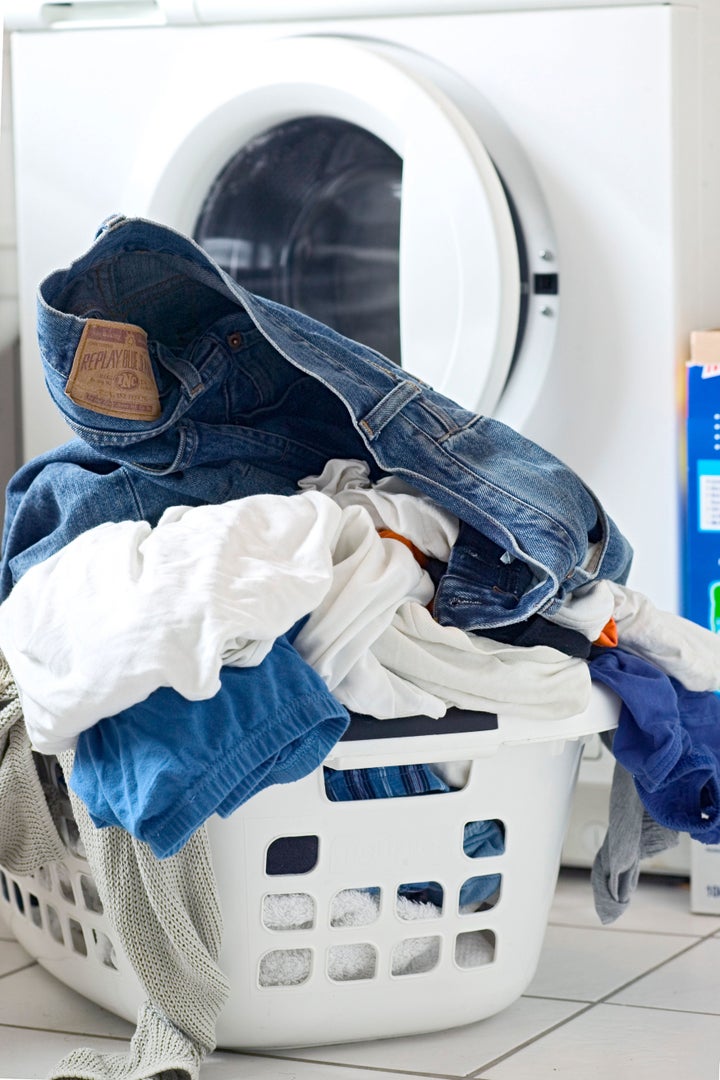
Doing the laundry is simple enough, right? Sort by color, choose your water temperature, add the detergent, set the cycle -- and then off you go to brew a fresh cup of tea, for a job well done.
Except that as you sit and sip, you recall the rash on your arm a few days earlier after you wore your dark green blouse to work. Or what about the itchiness that your son started complaining about a few weeks ago after wearing his favorite t-shirt? On an impulse, you walk back down to the laundry room, reach for the laundry container, look at the ingredients -- and wonder what is actually in that product that gets your whites so dazzling, and gives everything that fresh smell.
Maybe it's time we all took a closer look at what we're adding to our laundry.
Clean Laundry Naturally
It's only natural to want our clothes to be clean. The problem is that what we use to clean them is anything but natural. When I talk with people about switching to healthier household cleaners, they're most reluctant to change their laundry detergents -- they're just too hooked on the smell to make the change. But what if they knew what was in that smell?
Recent findings in a study done by the University of Washington show that air vented from machines using the top-selling scented liquid laundry detergent and scented dryer sheets contains hazardous chemicals, including two that are classified as carcinogens. Analysis of the captured gases found more than 25 volatile organic compounds (VOCs), including seven hazardous air pollutants. Of those, two chemicals -- acetaldehyde and benzene -- are classified by the Environmental Protection Agency as carcinogens, for which the agency has established no safe exposure level.
So make the change today. Switch to a non-toxic, biodegradable, plant based detergent. I promise you won't miss the old stuff.
Toss the Dryer Sheet
The "fresh" scent of fabric softeners usually serves as a disguise for a surprising array of toxic chemicals. In fact, recent studies reveal that among all household products, one of the most toxic is fabric softener.
Dryer sheets often contain toluene, trimethylbenzene, and styrene -- which are neurotoxins according to the Journal of Toxicology and Environmental Health. To make matters worse, dryer sheets are exposed to heat from water, dryers or ironing, which can make them emit hazardous vapors. So you see, it's not the spin cycle that's making your head spin...
Adding a quarter cup of baking soda to the wash cycle will soften your clothes nicely, and a little white vinegar will prevent static cling. Of course if you prefer a sheet, many green alternatives exist on the market.
Green Your Washing Machine, Too
While you're greening your clean, don't forget to consider your washer. Look for a front-loading, Energy Star machine the next time you're in the market for a new one. New washers on the market today can cut your energy, water and detergent use, which saves you money in the long run.
Top-loading machines use about 40 gallons of water per load, while Energy Star washers use only about 25 gallons. Top-loading washers have to be filled to keep the clothing wet while the agitator works the water around. Front-loaders, on the other hand, work their magic on a horizontal axis that saves both water and energy.
By the way, many cities will give you a rebate when you buy one of these machines because of the water and energy savings. You might check out the Department of Energy's Make a Clean Change -- Recycle Your Old Washer program, which promotes rebates on energy-efficient models.
Follow Sloan Barnett on Twitter and on her Facebook page at https://www.facebook.com/GreenGoesWithEverything.